Yolanda Ridge's Blog, page 3
September 7, 2021
Time for Change
Six months ago I wrote a post were I confessed to almost giving up on my writing career. I’m very happy to say that I didn’t give up. But I did start looking at other employment opportunities. Since I live in a small, rural town I didn’t dare dream that I would find a job that utilized my combined experience in genetics, healthcare and writing. In this post, I’m proud to announce that I did find it.
Starting today, I will be working full time as a Knowledge Translation Coordinator for the Genome Science Centre, part of the BC Cancer Research Institute based in Vancouver. Thanks to COVID (not something I type very often), I will be doing this job remotely from my beautiful mountain town.
I’m so excited to become part of this amazing group of researchers and help improve science literacy. I’m also a bit nervous about balancing my new job with my other jobs–parenting and writing. I do not plan to give up either. (Ha!) And in case you’re keeping track, here’s a list of my upcoming publications:
No Goal (Orca, 2022)
Not-so-Natural Selection (Annick, 2023)
What Poo Can Do: Animals Fighting Climate Change (Orca, 2024).
[image error]Pexels.com","created_timestamp":"0","copyright":"","focal_length":"0","iso":"0","shutter_speed":"0","title":"pile of books","orientation":"0"}" data-image-title="books-book-pages-read-literature-159866" data-image-description="" data-image-caption="Photo by Pixabay on Pexels.com
" data-medium-file="https://yolandaridge.com/wp-content/u..." data-large-file="https://yolandaridge.com/wp-content/u..." loading="lazy" width="1880" height="1261" src="http://yolandaridge.com/wp-content/up..." alt="pile of books" class="wp-image-3877" srcset="https://yolandaridge.com/wp-content/u... 1880w, https://yolandaridge.com/wp-content/u... 300w, https://yolandaridge.com/wp-content/u... 1024w, https://yolandaridge.com/wp-content/u... 768w, https://yolandaridge.com/wp-content/u... 1536w, https://yolandaridge.com/wp-content/u... 272w" sizes="(max-width: 1880px) 100vw, 1880px" />Photo by Pixabay on Pexels.comWhat Poo Can Do is the book I hinted about in my review of two nonfiction books in Orca’s Footprints series. Most of this book still needs to be written. There will also be editing and promoting for all three titles. In my “spare time”, I hope to continue writing fiction and putting together nonfiction proposals. I will also keep reading, of course, and will continue writing reviews when possible.
I can’t tell you how much I appreciate your continued support as I start this new journey. Wish me luck getting my sons to take on more responsibility around the house (and you’re welcome in advance to their future partners!).
Wishing everyone a safe and exciting September… a perfect time for change.
The post Time for Change appeared first on Yolanda Ridge.
August 25, 2021
The Whaler’s Daughter
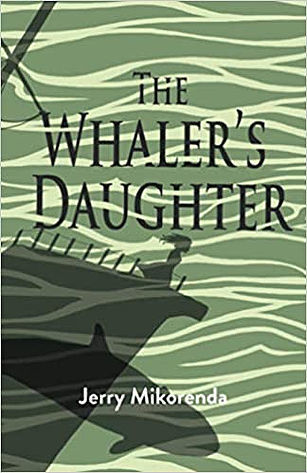 Title: The Whaler’s DaughterAuthor: Jerry MikorendaPublisher: Regal HouseISBN: 9781646030705 Publication Date: July 2021
Title: The Whaler’s DaughterAuthor: Jerry MikorendaPublisher: Regal HouseISBN: 9781646030705 Publication Date: July 2021Full disclosure: this wonderful book was written by my equally wonderful friend and writing partner, Jerry Mikorenda. There’s no way I can objectively review The Whaler’s Daughter so I’m not even going to try. The cover speaks for itself (isn’t it beautiful?) and Jerry’s writing skill shines from the very first page.
Instead, here’s the blurb:
Australia 1910. Twelve-year-old Savannah Dawson lives with her widowed father Caleb on a whaling station in New South Wales with an unusual crew.
The Dawson’s have a pact – some say an unholy one – where killer whales help them hunt larger whales. Savannah believes the killer whales also hunted her older brothers, who died mysteriously eight years earlier while fishing. Haunted by their deaths, she wants to become a whaler to prove to her father that she can to fulfill the family legacy and avenge her brothers.
On her first hunt, the whale destroys Savannah’s boat. The legendary orca JUNGAY returns to rescue her. Savannah rides Jungay to safety and begins questioning everything she thought she knew about the orcas, her family and the revenge she seeks.
For more information, check out this review from Bookworm for Kids. Please consider supporting Jerry by buying The Whaler’s Daughter, requesting a copy from your library, or suggesting it for your child’s classroom. You won’t regret it!
The post The Whaler’s Daughter appeared first on Yolanda Ridge.
August 18, 2021
The King of Jam Sandwiches
 Title:
The King of Jam Sandwiches
Author: Eric WaltersPublisher: Orca BooksISBN: 9781459825567Publication Date: Sept 2020
Title:
The King of Jam Sandwiches
Author: Eric WaltersPublisher: Orca BooksISBN: 9781459825567Publication Date: Sept 2020Eric Walters’ Governor General award winning book, The King of Jam Sandwiches, captured me from the first page to the last. I do yoga on a regular basis so I’m aware usually aware of my breath. But it wasn’t until I took the odd break from reading this heart-breaking middle grade novel that I realized I was out of it.
It’s impossible not to root for Robbie, the 13-year-old main character. He earns the title The King of Jam Sandwiches because he always brings jam sandwiches for lunch. Not because there’s no other food in the house (spoiler alert). But because he doesn’t want to use up some of the food he does have.
Robbie lives in poverty with his dad who suffers from bipolar disorder. He’s got a good understanding of his dad’s condition and deals with it by doing everything at home, being perfect at school and having a back up plan in case everything goes wrong.
His difficult life is uprooted when Robbie’s put in charge of welcoming a new student, Harmony, to school. Harmony’s a bit over the top. Perhaps for good reason. She’s in a new foster home and her mom’s in rehab for addiction.
The two are opposites in many ways. But they become fast friends and for the first time, they each have someone to lean on. It sounds a bit cliché but Walters does a fantastic job of showing how difficult life is for these two and why they bond.
The ending felt a bit rushed but I was super relieved that Robbie would get the care he needed and Harmony would stay in her foster home. I also appreciated the post note because I really wanted the two of them to be okay. Walters ends with a note to educators, which explains what adults can do for kids in Robbie and Harmony’s situation based on his own experience.
The post The King of Jam Sandwiches appeared first on Yolanda Ridge.
August 11, 2021
Alice Fleck’s Recipes for Disaster
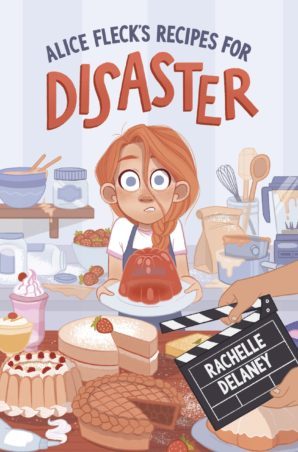 Title: Alice Fleck’s Recipes for DisasterAuthor: Rachelle DelaneyPublisher: Penguin Random HouseISBN: 9780735269279Publication Date: May 2021
Title: Alice Fleck’s Recipes for DisasterAuthor: Rachelle DelaneyPublisher: Penguin Random HouseISBN: 9780735269279Publication Date: May 2021I wanted to read this book the moment I saw the cover. I love to cook and bake and occasionally indulge in reality TV shows about people doing both. (The Great Canadian Baking Show and its model, The Great British Baking Show, are my favourites.)
Alice Fleck’s Recipes for Disaster wasn’t exactly what I expected–let’s just say that I won’t be making many dishes in the book–but it’s a great middle grade read. The story takes place over the summer during a week-long Victorian Festival at a manor where all the characters stay. As part of the festival, Alice and her dad compete in Culinary Chronicles–a reality show they like to watch together when they’re not in the kitchen.
The competition doesn’t turn out as expected, with a new host, judge and channel for broadcasting. Alice already has mixed feelings about competing, mainly because she doesn’t want her future classmates (she starts middle school in September) to know about her quirky hobby of preparing weird food. It doesn’t help that its her dad’s new girlfriend who got them on the show.
So when Culinary Chronicles becomes Culinary Combat, Alice wants to quit. Things get worse when the new judge keeps changing the rules and Alice starts to suspect that someone is sabatoging the competitors. Thanks to two new friends, Tavi and Henry, Alice persists and eventually they solve the mystery.
Alice’s dad is a culinary historian–a career I never really knew existed. I thought his girlfriend, also a University professor, was great but Alice doesn’t agree (at least not until the end of the story). The fact that the girlfriend’s vegetarian (along with mentions of vegetarianism being popular in the Victorian era and among suffragettes) made it easier for me to deal with the contestants making pigeon pie and gelatin.
What I appreciated most, however, was Henry (who wants to be a detective) and Tavi (who’s not at all embarrassed by her interest in séance and poltergeists). Through these new friends, Alice learns to accept “the heart wants what the heart wants” and it’s okay to be yourself. I won’t give away the ending but I will say that Alice makes a dessert which drives home the message that “inside everything–and everyone–(there’s) something unexpected”..
The post Alice Fleck’s Recipes for Disaster appeared first on Yolanda Ridge.
August 4, 2021
The Shape of Thunder
 Title: The Shape of ThunderAuthor: Jasmine WargaPublisher: Blazer + Bray ISBN: 9780062956675Publication Date: May 2021
Title: The Shape of ThunderAuthor: Jasmine WargaPublisher: Blazer + Bray ISBN: 9780062956675Publication Date: May 2021I really didn’t think Jasmine Warga could top Other Words for Home. I’m happy to say I was wrong. The Shape of Thunder is a brave book that tackles gun violence and believing in the impossible.
The story is told in alternating points of view from two best friends, Cora and Quinn. It starts almost a year after a tragedy that ended the life of both their older siblings and their friendship. I won’t give anything more away because one of the strengths of this story is how the backstory slowly unfolds in the present.
Quinn and Cora come together to try and go back to prevent the tragedy from occurring. At first I thought the concept of time travel was a bit…. far fetched. But the device totally works. It helps reveals both the history of what happened and the deep wounds each girl carries as a result. Because Cora and Quinn have lost so much, it’s easy to imagine how they could put their faith in something like time travel.
The Shape of Thunder does not provide all the answers. But Cora and Quinn do get the help they need in the end. This middle grade novel is highly recommended, with beautiful writing and a cast of believable (if not always likable) characters. There’s also enough scientific data to satisfy time travel doubters like myself. And proof that you can find anything on the internet–which as we’ve learned over the past year or so is definitely not always a good thing.
The post The Shape of Thunder appeared first on Yolanda Ridge.
July 28, 2021
We Dream of Space
 Title: We Dream of SpaceAuthor: Erin Entrada KellyPublisher: Greenwillow BooksISBN: 9780062747303 Publication Date: May 2020
Title: We Dream of SpaceAuthor: Erin Entrada KellyPublisher: Greenwillow BooksISBN: 9780062747303 Publication Date: May 2020Reading We Dream of Space during what some have called the “billionaire space race” provided an interesting perspective. My son and I have different opinions about the battle between Jeff Bazos and Richard Branson (and Elon Musk). Even though my son’s very passionate about space travel, it’s hard for me to accept that it’s a good use of money and fossil fuel emissions.
We Dream of Space is a lot like Hello, Universe–the title that won Erin Entrada Kelly a Newbery. It is character-driven, told from multiple points of view, and the story unfolds over a relatively short period of time. In We Dream of Space, however, the point of view characters are not friends but siblings in a very dysfunctional family. And it’s historical fiction, set in 1986 during the Challenger launch.
The Challenger launch is the main event in We Dream of Space . It’s used as a metaphor for the Nelson family, who exist in separate orbits. Each of the siblings have their own coming-of-age but Bird (who dreams of becoming NASA’s first female shuttle commander and looks up to Judith Resnik), is the heart of the novel. Her journey’s more subtle and well drawn than that of her twin, Fitch (who has anger control issues) and older brother, Cash (who isn’t good at anything).
Like Hello, Universe, things are not neatly tied up at the end of We Dream of Space. The siblings have a tender moment in the final chapter where they eat dinner together outside but the parents aren’t involved. There’s no quick resolution to the rift between Mr. and Mrs. Nelson, which cuts deep and affects the family in many ways. Bird doesn’t get over the Challenger disaster but with the help of her brothers it does appear as if she will be able to move on and pursue her dreams.
We Dream of Space is well-written and Kelly uses her skill in character development to full capacity. I hated Mr. Nelson almost as much as I loved Ms. Salonga–the teacher who’s as devastated by the Challenger disaster as Bird. I appreciated the classroom discussions about the pros and cons of space exploration. The book concludes with Bird’s idea that “The universe is waiting. Even though I’m just a tiny grain of sand, it’s waiting for me.”
One thing that struck me is how much the world (and the reasons for going to space–or not) has changed since 1986. I loved all the references to arcade games, books and music because Bird, Fitch and Cash are close to the same age I was in 1986. Middle grade readers today may not feel the same. But I think this book provides a great jumping off point for further discussion on the benefits and drawbacks of modern-day space exploration. It also includes back matter with resources and additional information on the Challenger disaster.
The post We Dream of Space appeared first on Yolanda Ridge.
July 21, 2021
Orca Footprints
For this post I’m doing something different. I’m reviewing two middle grade nonfiction books from the Orca Footprints series. Why? Mostly because it’s been months since I did a review. But also because I want to share some more good news: I just signed a contract to write a book for this series that will be coming out in 2024!
Stay tuned for more information on my title in the Footprints series but first… the reviews!
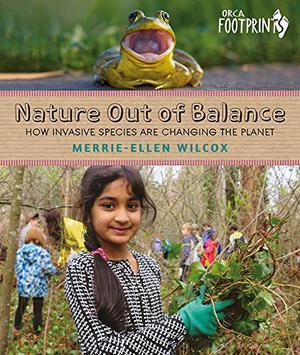 Title: Nature out of Balance
How Invasive Species are Changing the Planet
Author: Merrie-Ellen WilcoxPublisher: Orca Book PublishersISBN: 9781459823952Publication Date: February 2021
Title: Nature out of Balance
How Invasive Species are Changing the Planet
Author: Merrie-Ellen WilcoxPublisher: Orca Book PublishersISBN: 9781459823952Publication Date: February 2021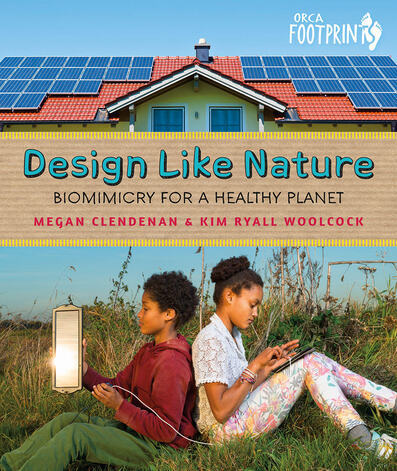 Title: Design Like Nature:
Biomimicry for a Healthy Planet
Author: Megan Clendenean & Kim Ryall WoolcockPublisher: Orca Book PublishersISBN: 9781459824645Publication Date: March 2021
Title: Design Like Nature:
Biomimicry for a Healthy Planet
Author: Megan Clendenean & Kim Ryall WoolcockPublisher: Orca Book PublishersISBN: 9781459824645Publication Date: March 2021Nature out of Balance starts with a chapter, “Here, There and Everywhere” which describes what makes a species invasive and how they become that way. Perhaps what I love most about this book is that Wilcox doesn’t wait till the end to reveal the biggest invasive species of all: humans.
From there, Wilcox goes on to explain how ecosystems work, how to prevent species from becoming invasive and what to about species that have already invaded. Each chapter contains several eco facts and invasive all-stars sidebars, which provide details on a wide range of species from zebra mussels and starlings to rats and cats.
Following a similar format, Design Like Nature has facts as call outs and more in-depth sidebars throughout. After a brief introduction, the authors dive in with inventions (like solar panels that convert sun into energy just like plant cells), engineering (how chip bags are like insect exoskeletons) and asking advice from nature (copying fireflies to design LED lights).
In Design Like Nature, however, it was the last chapter I liked the most. Other chapters introduce environmental concepts like plastic pollution and energy wastage but “Reducing our Footprint” really tackles how we can design things to create a better world. Building cooler cities by learning from trees, using bacteria to dye clothes and developing a better wind turbines by observing how fish swim are all good ideas. The authors make them–and many more–seem achievable and feature specific people trying to make change.
Both books have multiple colour photographs throughout each of the four chapters. Like most books in the Footprints series, they also contain back matter that includes acknowledgments, resources, glossary and index. WIth twenty-six books already available and more to come, this series is a great addition to any classroom or library. They also stand alone and these two titles, Design Like Nature and Nature out of Balance, are a great place to start.
Here’s how Orca describes their Footprints series:
“Kids today inhabit a world full of complex—and often mystifying—environmental issues. Orca Footprints aim to help kids answer their questions about the state of the natural world with well-researched, simply-expressed information and powerful images. With topics such as food production, water, cycling and sustainable energy, these books will inspire kids to take action.”
I can’t tell you how proud I am to be part of this collection. And now for a little teaser… my book in the series will be about climate change, told from a unique angle.
Curious? Then please watch for updates! And thanks for your support.
The post Orca Footprints appeared first on Yolanda Ridge.
May 6, 2021
Starfish
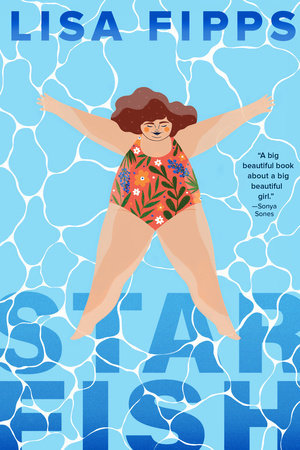 Title: StarfishAuthor: Lisa FippsPublisher: Nancy Paulsen BooksISBN: 9781984814500Publication Date: March 2021
Title: StarfishAuthor: Lisa FippsPublisher: Nancy Paulsen BooksISBN: 9781984814500Publication Date: March 2021I first heard about Starfish through Nerdy Book Club. Lisa Fipp‘s author post resonated with me so deeply I knew I had to read her debut middle grade novel. I wasn’t really overweight as a child but I did struggle with an eating disorder in my preteens. I don’t talk about it often, probably because it’s something I don’t really understand to this day. Not eating was partly about body image but more about control–something I didn’t have at that time in my life (and plenty of times since!).
My experience was nothing like 11-year-old, Ellie’s. But her story–told in verse–still resonated with me very deeply. I felt everything she was feeling and couldn’t put the book down (even when I got to the end).
Starish is about Ellie, who’s been bullied about her weight ever since her 5th birthday party when her older sister gave her the nickname “Splash”. Near the beginning of the book, Ellie meets her new next door neighbor, Catalina, during her best friend’s going away party. This is an example of why I think the story works so well–the horrible things happening to Ellie (like her BF moving away) are balanced by the good things (her new friend, Catalina).
This “formula” allows the author to make the bad stuff really bad as long as she makes the good stuff really good. The bad stuff includes Ellie’s mom and brother and the bullies at her school. Also most of the doctors Ellie goes to and fat-shaming society we live in. I had a visceral reaction to all these characters and situations because they are heart-breakingly MEAN.
The good stuff, including Catalina (and her family), Ellie’s dad and her therapist Dr. Wood (or as Ellie calls her Dr. Woodn’t-You-Like-to-Know), is just so GOOD. Plus, Ellie’s got a great sense of humor. I love the terms she coins, like smowning (an exaggerated smile that drops into a frown) and snarlcasm (one part snarl, three parts sarcasm).
There’s a lot more to this quick read. But I’ll leave you their words instead of mine.
From Ellie:
“I plan to become a storyteller,
and a poet,
to help people feel what it’s like
to live in
someone else’s skin.
Mom’s a journalist,
determined to expose
all that’s wrong in the wrold
and spotlight everyone’s flaws,
not caring if she
gets under people’s skin.”
(I can’t include her confrontation with mom at the end because that will make me cry elephant tears all over again.)
From Lisa Fipp’s author note: “Right now, many people still think it’s okay to bully people who weigh more than they do. My hope is that Starfish will change people’s attitudes and that, one day, no one will be bullied because of their size or for any reason. But until that day comes, know that no matter your size of who you are, you are lovable and deserve for people to treat you like you’re a valuable person. Because you are.”
For more, read Starfish and check out Lisa Fipp’s author website. In addition to a stunning mosaic on the cover page, she provides tons of resources including a Bullying Is NEVER Okay brochure, a common core-aligned discussion guide and even a playlist!
The post Starfish appeared first on Yolanda Ridge.
April 14, 2021
Fighting Words
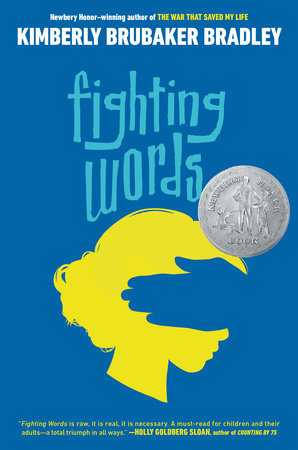 Title: Fighting WordsAuthor: Kimberly Brubaker BradleyPublisher: Dial Books for Young ReadersISBN: 9781984815682Publication Date: August 2020
Title: Fighting WordsAuthor: Kimberly Brubaker BradleyPublisher: Dial Books for Young ReadersISBN: 9781984815682Publication Date: August 2020Words can’t describe how much I love this book. Based on how much I loved Kimberly Brubaker Bradley’s The War That Saved My Life and The War I Finally Won, I expected to like Fighting Words. But I didn’t expect to love it as much as I did. Especially since it tackles difficult topics like sexual abuse, suicide, and addiction.
But here’s the thing. Bradley does it so well. Without shying away from their horrible situation, Bradley tells the story of 10-year-old Bella and her older sister, Suki, with compassion and just the right amount of description. Middle grade readers will understand what’s happening without having to endure too many details.
Through Della’s compelling and believable voice (she replaces the swear words that are part of her vocabulary because she’s heard them so often with “snow”), we learn that Della and Suki’s mom is incarcerated for blowing up a motel room cooking meth. Afterwards, the sisters went to live with her horrible boyfriend, Clifton. They escaped when Suki caught Clifton assaulting Della for the first time, something he’d been doing to Suki for years without Della knowing.
To make this backstory easier to handle, we meet Della and Suki once they’ve gone to live with their foster mom, Francine, who’s just the right balance between stern and sweet. Della goes to 4th grade at a new school–something she really doesn’t like–and makes a great friend in Navaeh, who invites Della for her first sleepover and even gets her swimming at their after school program.
At first, I didn’t think Fighting Words was for everyone. I changed my mind when Della’s therapist tells Della that what happened to her and Suki is common. In her words, “You’re probably not the only kid it’s happened to in your class… It happens that often. And it happens to both boys and girls.” With the help of her therapist, Della also stands up to the bully in her class delivering an important message about consent in the process.
In the author note, Bradley provides resources and tells readers that she was sexually abused as a child. Again in her words, “It was hard and bad and it affected my life in lots of difficult ways. I didn’t tell anyone for a very long time… Eventually I found my words. I wrote this book hoping it would help readers find theirs.”
Fighting Words is full of love and resilience and even a bit of humor. It deserves the Newbery Honor and all the other awards and accolades it’s received. Bravo, Kimberly Brubaker Bradley!
The post Fighting Words appeared first on Yolanda Ridge.
March 25, 2021
Not Giving Up
My (very supportive) husband’s always reminding me that whenever I get down about writing something always happens to keep me from quitting.
I’m not going to lie–he’s had to remind me a lot lately. Rejection is hard. And even though it’s been ten years since the publication of my first book, Trouble in the Trees, my skin isn’t getting any thicker. Add the stress of 2020 to the mix and well… quitting has definitely been on my mind.
I know 2021 hasn’t fixed all the world’s problems but it has brought the “something” I needed to continue on my author journey. In fact, it brought two in less than a month. Those somethings are (drum roll please…)
 BOOK CONTRACTS!!
BOOK CONTRACTS!!At the beginning of the month, I signed a contract with Annick Press for my second non-fiction book tentatively titled NOT-SO-NATURAL SELECTION: How (and Why) Humans Change Everything. Aimed at middle grade readers, this book will explore the increasing impact of various human activities on the evolution of everything from plants to people. It’s only partially written and will need to be illustrated (by someone other than me) so the optimistic timeline for publication is 2023.
Just this week, I signed contract with Orca Book Publishers for my fourth middle grade novel. NO GOAL (also a tentative title) is about a hockey player who turns to a bobblehead for help when he steps up to be goalie of his team. I pitched it as The Mighty Ducks meets Aladdin, except the reader must decide whether the bobblehead’s actually granting wishes or whether believing creates magic of its own. If all goes well, NO GOAL will hit the shelves at the same time as players hit the ice for the start of the 2022 hockey season.
I’m not sure how to express just how hard I’ve had to work for this. Both these books have been in process for over two years (not counting the time they spent in my head before making it onto paper). There were many times I almost gave up on them (and me). I couldn’t have persevered without the support of my family, friends and fellow writers. It means the world to me that Annick and Orca still believe in my writing and I can’t wait to bring these books out into the world.

The post Not Giving Up appeared first on Yolanda Ridge.



